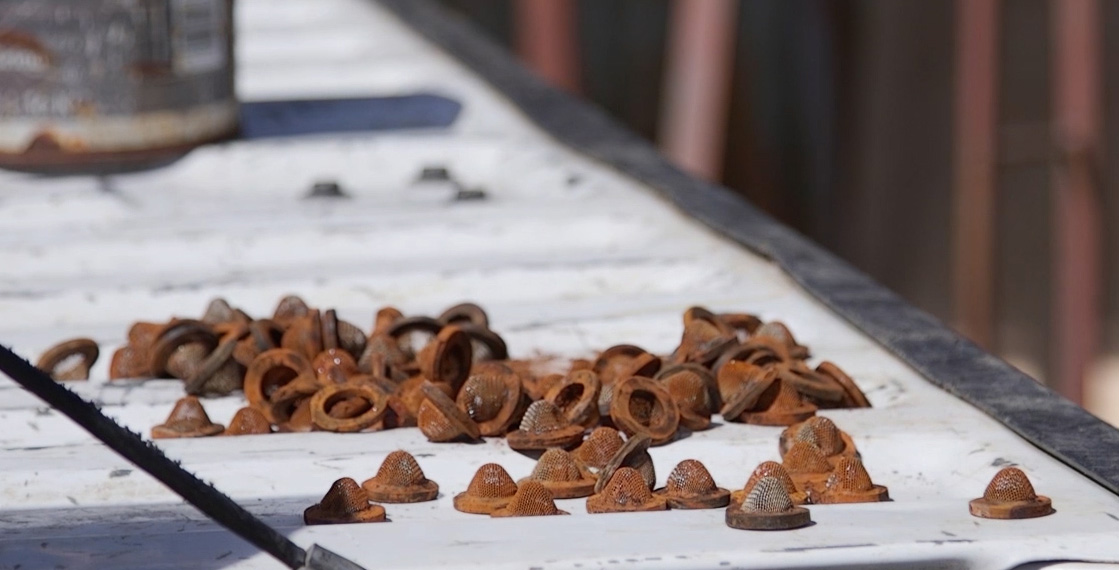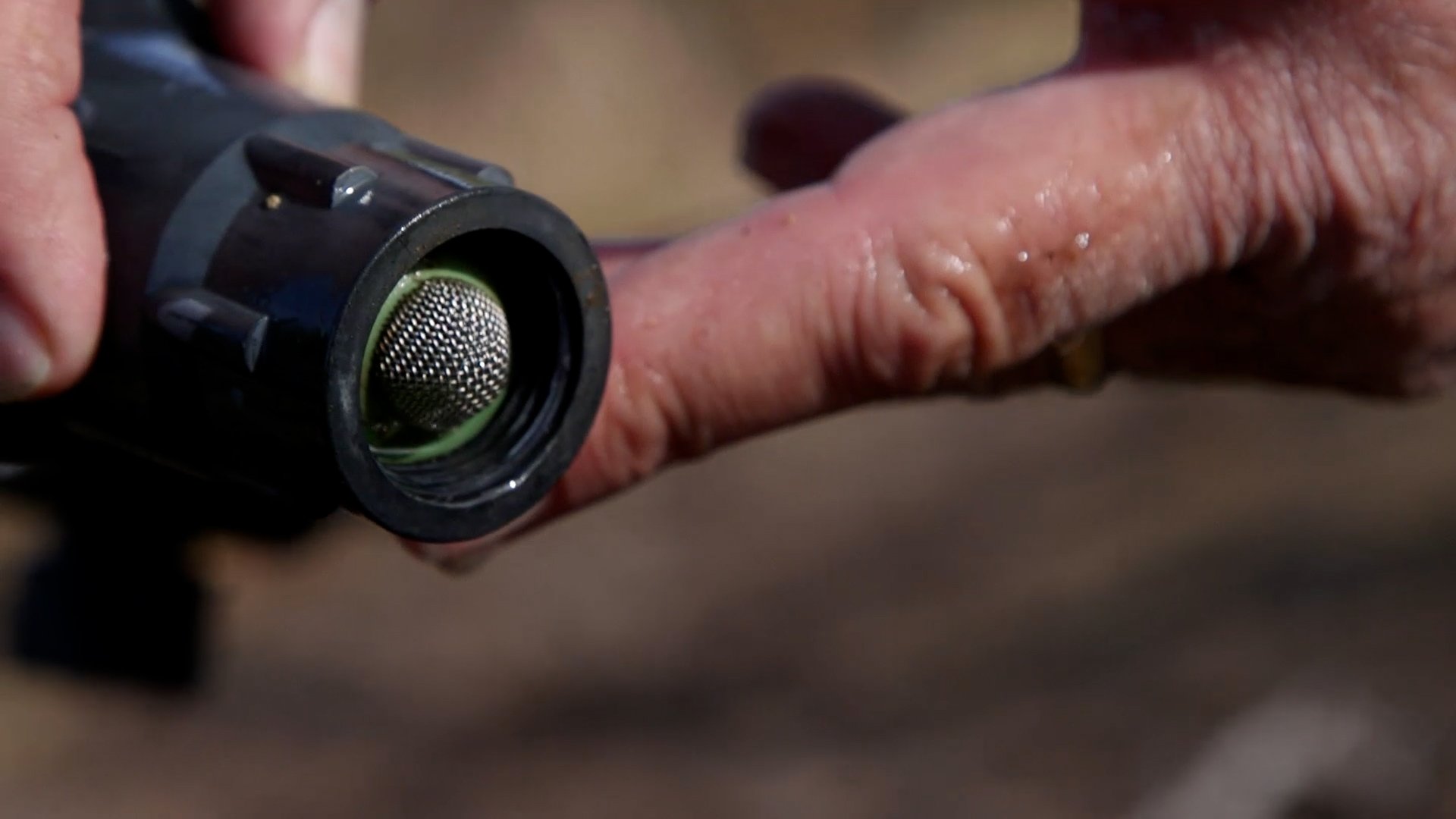To keep irrigation systems running at optimal efficiency and uniformity Its important to understand how they become fouled. Having good filtration and system design can keep grit and other solids out of your irrigation lines but any water available for irrigation will have minerals and biological activity.
Biofilms + Minerals = Scale

Emitters destroyed by iron scale
Biofilms bind minerals into a hard scale, similar to the way cement binds together aggregates to form concrete. Scale will block emitters and cause uneven, inefficient irrigation and shortening the usable lifespan of the system hardware.
The ‘hardness’ or mineral content of the water will depend on the geological makeup of the area and whether the water comes from a surface or subterranean source. Harder water contains higher levels of minerals like iron, calcium and magnesium that are essential mineral nutrients for plants but can also clog irrigation systems.
Biofilms are secreted by bacteria and other microorganisms living in the wet environment of the irrigation lines in order to protect themselves from environmental stresses and secure mineral nutrients. Water that contains higher levels of nutrients and is exposed to warmer temperatures will produce biofilms more rapidly.
Phyto-C3 Provides Cleaning and Ongoing Maintenance

Emitter in irrigation system under Phyto-C3 maintenance treatment.
Because Phyto-C3 uses a gentle nanobubble mechanism to break apart biofilms it can be used not just to clean out a fouled system but also throughout the growing season to keep scale from redeveloping while improving soil and crop health.
TREATMENT GUIDELINES
- Phyto-C3 should be injected upstream of any filters to clean them along with the rest of the system.
- Phyto-C3 can be applied with any fertilizers to facilitate nutrient uptake.
- The normal pumping of irrigation systems produces enough aeration in the water to activate Phyto-C3. In gravity fed systems additional aeration may be needed.
- In most circumstances, a gallon of Phyto-C3 per 1000 emitters, per year, will be adequate for good maintenance.
- These dosage recommendations apply to both conventional liquid Phyto-C3 and to Organic Phyto-C3 powder pre-mixed at the recommended ratio of 5 ounces of powder to one gallon of water.
MAINTENANCE TREATMENT
When an irrigation system is clean, a maintenance dose should be added to all the water that passes through it. We recommend using a dedicated dosing pump wired so that it turns on with the irrigation system pumps.
The dose needed to maintain a clean irrigation system can vary depending on many factors such as mineral and nutrient levels in the water, the volume of irrigation water used and the length of time between irrigations. A sufficient dose may be less than 1ppm or greater than 12 ppm.
In drip irrigation or center pivot systems, we recommend an initial dose of 4 ppm or 1/ml per 70 gallons of water.
In greenhouses or hydroponic systems, there is usually a much higher level of nutrients and consistently warm temperatures, so a dose of 10 ppm or 1 ml per 27 gallons is a good starting point.
The dosage can be adjusted up or down to find the "sweet spot" where the system stays clean with the minimal dosage.
CLEAN OUT TREATMENT
If an irrigation system is fouled, a thorough clean out treatment is recommended. 1 quart or 1 liter of Phyto-C3 per approximately 1 acre or 1000 emitters provides an adequate clean out treatment under most conditions.
The clean out treatment should be applied over at least 6 hours and 12 hours or more if possible.
- Determine the rate of irrigation and dosing that will allow you to inject your clean out dosage at the slowest rate practical. If necessary Phyto-C3 may be diluted before injection so that it can be injected more slowly.
- Prepare the clean-out treatment of Phyto-C3 and the equipment needed to inject it.
- Irrigate without Phyto-C3 until all the lines are filled with untreated water and the most remote emitters have been reached.
- Apply the entire Phyto-C3 clean out treatment at the rate determined in step 1.
- Open up the irrigation tube ends and flush out the system with plain water as you would normally.
You will observe an unusual amount of sludge flush out of the system. If a maintenance treatment is consistently applied after the clean out you may never need to flush out the system again. Please contact us at info@irrigationcleaning.com or call David Prum at 617 921 9455 to discuss your application.
